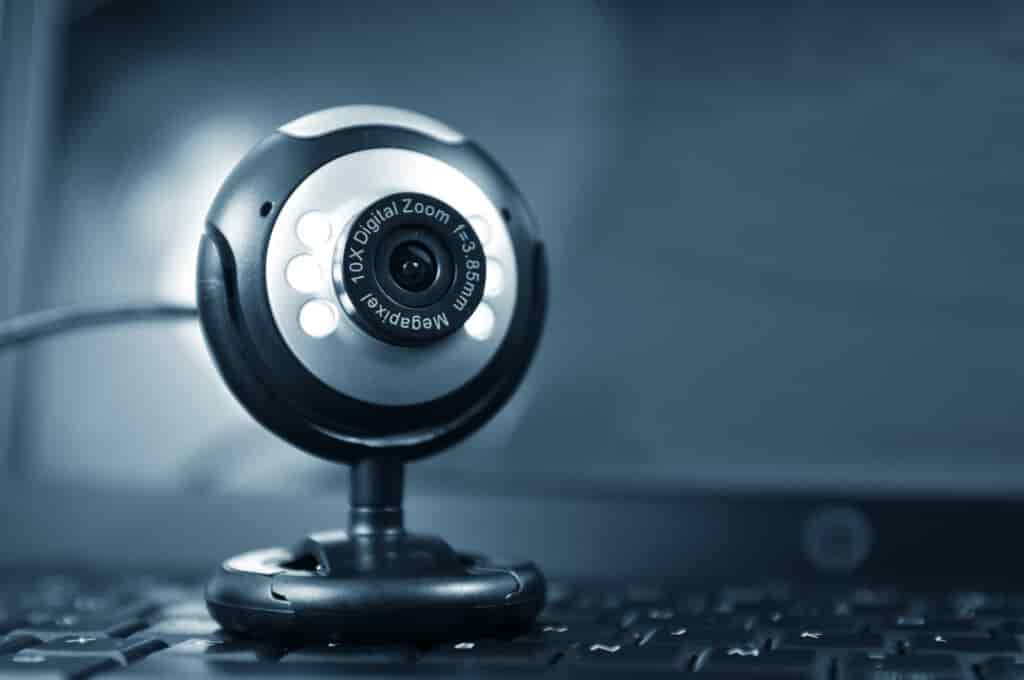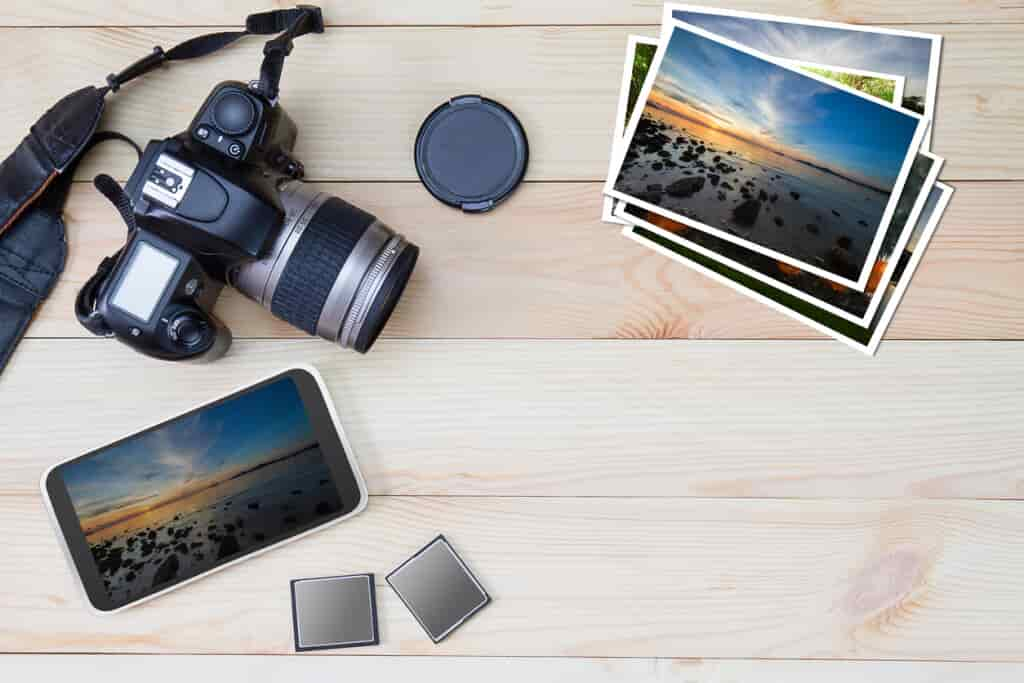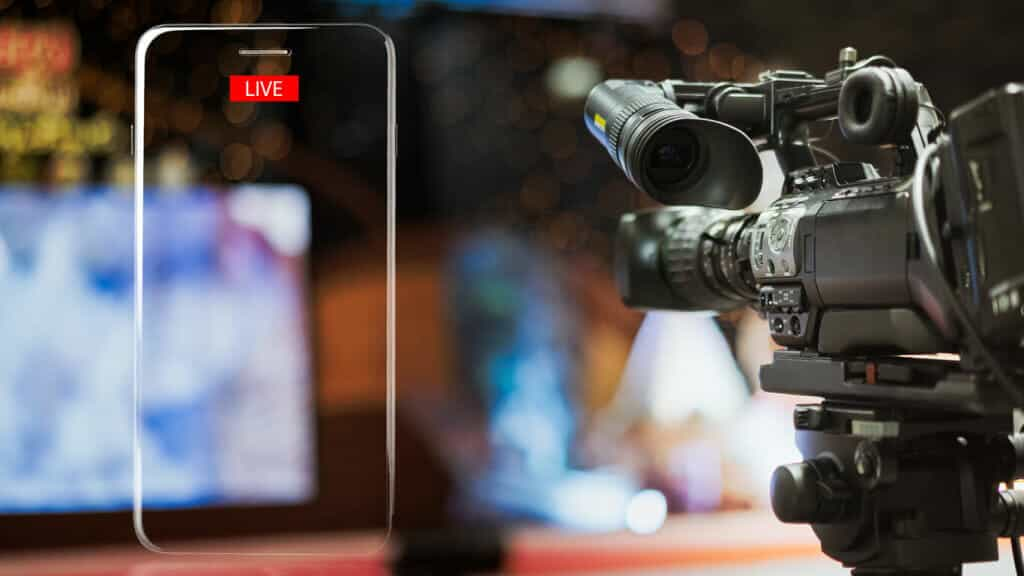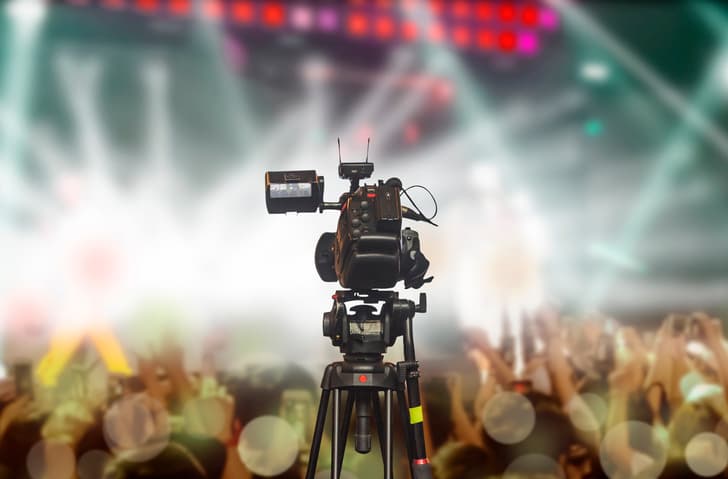How to Choose the Best Camera for Live Streaming Video in 2025
Live-streaming video content today is essential for growth. Brands and businesses everywhere are connecting with their target audiences and providing more value through live-streaming video. Live streaming video content is part and parcel of a great marketing strategy. It enables anyone from anywhere to connect with brands and allows them to build a large audience.
However, building a large audience requires more than just simple video capture. With competition fiercer than ever, broadcasters need the right live streaming video camera, and content quality must be exceptional. A high-quality digital camera with great image quality and camera sensors All this and more can be achieved with the right professional camera for live streaming.
In this article, we break down why you need professional-grade live-streaming video equipment. We’ll cover the essentials and types of cameras necessary for better image quality. Finally, we’ll help you choose the best camera for your particular live-streaming needs.
Table of Contents
- Why You Need Live Streaming Equipment
- Essential Live Streaming Equipment Needed
- Why a Professional Camera Setup Matters
- Types of Cameras for Live Streaming (With Recommendations)
- Choosing the Right Camera for Live Streaming Your Content
- Conclusion
Why You Need Live Streaming Equipment
Creating video content has never been easier. Most consumers can begin streaming anytime they want simply by pulling their phones out of their pockets.
However, just because your business can make do and create streaming content with easily accessible equipment doesn’t mean you should not invest in higher-quality, more professional equipment.
The video content you create should be part of a larger digital content strategy for your business. Regardless of whether you’re making videos for internal use or external use, it’s important that your content is clear and looks professionally produced. This gives off a polished impression of you as a business, increasing confidence in your business and making customers more likely to buy from you.
Additionally, utilizing higher-quality live streaming equipment such as a camera makes recording and producing your video much easier.
Professional-grade cameras have special features such as image stabilization, decreasing the risk that your shots will be shaky and need to be re-done. Even though you will pay more money upfront for higher-grade live-streaming equipment, what you’ll save in time and frustration will help make up for the extra expense.
Next, let’s look at what type of equipment you will need to get your live streaming set up for success.
Essential Live Streaming Equipment Needed
To get yourself set up to properly livestream your content, here are six of the important pieces of equipment that you should plan to invest in to make your operation as professional as possible.
1. External Microphone


Sound quality is important in your streaming content. Relying on the built-in microphone on your phone or camera isn’t going to cut it when producing professional video.
Instead, invest in an external microphone to suit your production needs.
If you’re planning largely stationary streamed content, such as podcasts or presentations, a traditional stand microphone will suit your needs. For content that will be more dynamic, such as event coverage, it’s probably best to invest in some Lavalier microphones to clip onto your participants’ clothes or an on-camera microphone that can be mounted to the video camera.
2. Video Encoder
To live stream your content directly from your camera, you will need to get a video encoder involved in the process.
Encoders take the RAW files directly from your camera and turn them into a streamable, playable format. If you do not utilize a live streaming platform such as Dacast, which automatically takes care of encoding live streams for you, you will need to purchase a separate encoder to take care of the process.
When shopping for an encoder, look for one that’s compatible with as many major live-streaming platforms as possible to cause you the least headache when you attempt to share your content.
3. Internet Connection Device
Part of providing high-quality live streaming content is to be able to quickly and reliably stream that content over the internet.
If you’re filming a video but the internet connection from which you’re uploading is spotty, your viewers will get frustrated with slow load times and missed content.
To avoid this, be sure to purchase a top-notch internet connection device. If you’re planning to stream in HD, look for at least 3 to 5Mbps; for 4K or UHD video, you will need at least 25Mbps.
4. Battery Power System
Switching out batteries mid-live stream will interrupt your content, causing you to lose viewers.
To maintain consistent battery power without worrying about switching out your packs, purchase a battery system. These devices allow you to power your equipment with either an external battery pack or wall power, giving you constant power and keeping you from draining all your available batteries too quickly.
5. Tripod or Mount


Longer live streams, especially those where your camera will be largely stationary, require a good tripod to save your arms from holding the camera all the time.
Look for something that has smooth-telescoping legs and stable feet, giving you a sturdy base for your camera that won’t topple over too easily.
6. High-Quality Video Camera
The most important piece of your live streaming equipment setup is to get a high-quality camera with enough features to support your live streaming needs.
Next, we’ll take a look at some of the types of cameras for live streaming available on the market.
Why a Professional Camera Setup Matters
In today’s media-saturated landscape, first impressions matter. A shaky stream or fuzzy video reflects poorly on your brand. Sure, you can go live from a smartphone in a pinch—but if you’re serious about using video to grow your business, investing in the right camera setup pays dividends.
Professional-grade cameras offer features like:
- Superior image sensors for crisp detail
- Clean HDMI outputs for smooth streaming
- Advanced controls for lighting, focus, and exposure
- Better integration with encoders, microphones, and tripods
- Long-term reliability for continuous use
Now let’s break down the essential equipment and explore camera types that suit different needs and budgets.
Types of Cameras for Live Streaming (With Recommendations)
1. Webcams: Simple & Budget-Friendly


Webcams are popular choices for live streaming, especially those who stream podcasts, video games, or other streams where the camera can be trained on the subjects in one place.
These cameras hook directly into your computer and come with a built-in microphone. Because webcams connect directly to your computer, you won’t need a separate video encoder when using this type of camera.
To get better audio quality, however, purchasing a separate microphone is ideal.
Perfect for: Internal meetings, webinars, solo creators
Webcams are plug-and-play and affordable, but limited in quality and controls.
Top Pick:
Logitech C920s HD Pro ($59.99) – 1080p resolution, auto-focus, and solid light correction.
2. DSLR or Mirrorless Cameras: Cinematic Versatility


DSLR cameras provide exceptional video quality, high photo resolution, and great low-light performance. If you’re planning to film in dynamic situations where the light is changing often or your distance from your subjects will change frequently, a DSLR is probably the best choice.
To get a similar video quality but a more compact camera, such as if you’re live streaming sporting events, a mirrorless camera will be necessary.
When selecting a DSLR or mirrorless camera, it’s essential to make sure your model can accommodate longer recordings and a clean output that hides the statues and icons of your viewfinder. Depending on your setup, you may also need to connect a DSLR or mirrorless camera to a video encoder.
Perfect for: Studio shoots, interviews, creative content, hybrid live/on-demand production
DSLR and mirrorless cameras are excellent for high-quality live streaming with shallow depth of field, interchangeable lenses, and great low-light performance. While they require some technical know-how and may need additional gear (capture card, dummy battery, external mic), the results are outstanding.
Top Pick:
Sony Alpha a6400 Mirrorless Camera ($899) – Compact, clean HDMI output, superb autofocus, and excellent image quality. Ideal for professional content creators who want flexibility and clarity.
3. Smartphones & Tablets: Portable Powerhouses


Today, smartphones are a dime a dozen. Most professional broadcasters have them, whether it’s for work or personal use. With built-in video cameras, microphones, broadband internet connections, and the ability to run apps, a smartphone can serve as an all-in-one mobile device for live streaming.
It’s possible to get a decent stream quality from a smartphone. That’s especially true with newer smartphones that can capture video in 4K and 5K.
However, many of the same drawbacks of webcams apply here. The sound quality is generally poor on smartphones and image quality suffers in low-light conditions. Zoom and other image customizations are generally absent or basic.
In general, a smartphone or a live streaming app is fine for basic consumer-level streaming, but professionals are better off with an IP camera or dedicated professional-grade camera.
Perfect for: On-the-go live streams, quick product demos
Most modern smartphones support high-resolution streaming, especially paired with external mics and gimbals.
Top Picks:
- iPhone 16 Pro Max (from $999) – Excellent 4K video, great for mobile content
- Google Pixel 9 Pro ($799) – Affordable Android option
4. Wireless Cameras: Freedom of Movement


Some broadcasters cover developing events that require them to head out of the studio and record on the go. In these situations, a wireless camera comes in handy.
Some wireless cameras are internet-enabled and can be controlled by an app. This sort of mobility and flexibility can certainly come in handy.
Perfect for: Sports, field marketing, live tours
Wireless cameras let you stream without physical constraints and often come with motion tracking or remote controls.
Top Pick:
Pixio Robotic Camera ($1,719) – Auto-tracking, wireless, and designed for dynamic shooting.
5. IP Cameras: Scalable, 24/7 Streaming


An IP camera has an IP address and its own ability to link to the Internet separately from a computer. Using IP cameras is a little more complicated than using webcams, but they are much more versatile.
Because they connect via Ethernet, they can be positioned anywhere you need them. Additionally, many IP cameras include power over ethernet (PoE), so you can run them 24/7. This combination makes them ideal for many uses.
IP cameras are commonly used for 24/7 streaming, permanent installation in churches or conference rooms, and other similar streaming setups.
One thing that makes streaming with IP cameras a little more complicated than using webcams is that it requires an encoder. This is because the protocol that most IP cameras use isn’t suitable for live streaming.
IP cameras are also significantly pricier than the other cameras we’ve mentioned. Costs vary quite a bit, but a good IP camera is likely to cost several thousand dollars.
An IP camera is a good choice of live streaming camera if you need a lot of flexibility in where the camera is located relative to the computer processing the image. Provided the camera has access to the Internet over a wireless network, it can be located just about anywhere.
Perfect for: Houses of worship, security, education, or fixed-location broadcasts
These cameras connect directly to the internet, often via PoE (Power over Ethernet), and are ideal for remote or permanent setups.
Top Pick:
PTZOptics 30X-NDI ($1,899) – Pan-Tilt-Zoom capability, excellent for church and conference room streaming.
6. Professional Cameras: Broadcast-Ready


Professional cameras offer more flexibility and power than any of the cheaper options. You can change and upgrade lenses, use zoom and wide-angle focus, and do all of the things you’d expect from a professional camera. This includes the ability to use external monitors, hot-swap storage and batteries, use filters, and so on.
Another major advantage is support for XLR audio, which is the professional standard. While not as portable as a webcam or IP camera, professional-quality live streaming cameras are fairly easy to transport and use on-site.
Of course, versatility and ease of use generally don’t go together. Professional video cameras aren’t as simple to use as a webcam. If you don’t already have experience with them, you may face a learning curve.
This option requires a “capture device” to facilitate using the camera for live streaming. A capture device is either installed inside a desktop computer or connected via USB. It converts the video signal from your cameras into a form that can be used for live streaming. It’s also important to ensure that your capture card will work with your camera’s input. Check the particulars of the card and accompanying software before buying.
Aside from this, the only downside to professional-grade cameras is the cost. A good quality HDMI camera will run you close to $1000, while the price for a top-of-the-line HD-SDI camera runs into the several thousand dollars range.
Perfect for: Events, hybrid conferences, training videos, studio streaming
Professional camcorders and DSLRs offer unmatched image quality, interchangeable lenses, and pro-level audio support. They require a video capture card or encoder to stream.
Top Picks:
- Canon XF605 UHD 4K Camcorder ($4,699) – Premium option for commercial-grade video
- Canon XA40 4K Camcorder ($1,599) – Great value for high-quality, reliable streaming
Choosing the Right Camera for Live Streaming Your Content
Different types of streaming content require different cameras for the best results. Here are the best options for a variety of business niches:
Best Camera for Broadcasting Live Sports


For sports, you need a camera that’s lightweight enough to follow the action when it’s moving fast but also has enough picture clarity to capture all the movement.
When selecting a camera for live streaming sports, look for compact, ergonomically designed cameras that pack high-resolution quality in a small body.
Best choices: Action cameras (for first-person sporting streams such as mountain biking and skateboarding) or camcorders (for more traditional court sports)
Best Camera for Live Streaming Events


When live streaming an event, look for a camera that offers a long recording time and can produce exceptional picture quality.
For most events, ergonomic design and compact construction are not going to be as much of a necessity, as the camera will largely be located in one place
Best choices: A professional camcorder, a high-quality DSLR, or even a mirrorless camera, along with a sturdy tripod or mount will be suitable for most live event setups.
Best Camera for Mobile Live Streaming Events


If you’re planning to livestream an event for mobile viewers, your choices are very similar to those for a traditional live event. You do want to make sure that you have a solid video encoder, either within the camera setup itself or externally that connects to a computer, so your video is easily playable on all devices
However, if you’re planning to livestream an event where your video will be shot more dynamically and requires the person operating the camera to move around a lot, a compact camera that also offers great video quality is essential.
Best mobile live streaming equipment choices include A smartphone such as Apple’s new iPhone 12 Pro, a DSLR mirrorless camera, or a camcorder with a tripod, depending on your setup.
Best Camera for Live Streaming Church


Similar to live streaming a concert or conference, live streaming a church service will only require the camera to be located in one place for the majority of the service.
For this purpose, you want to make sure you have crisp picture quality and something that can capture sound well, such as an external microphone or even lavalier microphones on speakers and singers. A great tripod is also essential to keep the shot steady throughout the service.
Best choices: DSLR, mirrorless camera, camcorder, or a good-quality webcam for small services and lower budgets.
Conclusion
As we’ve outlined, there’s a lot to consider when choosing the right camera for your live-streaming needs. Creating successful live-streaming content today requires professional, high-quality equipment.
By investing in the essentials we’ve listed, you can shoot videos that will wow your audience. Combined with entertaining and valuable video capture, you can create content that will grow your viewership. Once you’ve got the right video equipment, you can then take your live-streaming to the next level.
Using Dacast’s professional live streaming platform you can organize, store, stream, and share your content with the world. Dacast’s platform enables you to do all this quickly and easily in the highest quality.
You can try Dacast free for 14 days by signing up today.
TRY FREE TODAY
For exclusive offers and regular live-streaming tips, you’re also welcome to join our . Also, feel free to contact our team with specific questions – we’re here to help!


